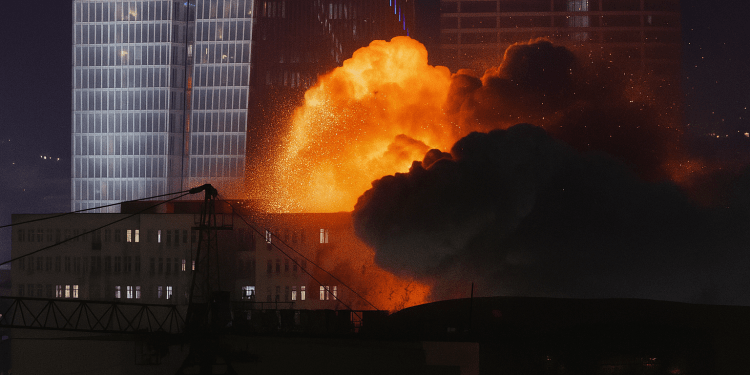Tehran warns that any U.S. involvement would not just escalate the conflict—but could shatter regional stability and unsettle global markets.
From Missile Retaliations to US Warnings
Israel’s strikes on Iranian nuclear and missile sites (notably near Isfahan) triggered swift retaliation—ballistic missiles aimed at Israel. Shortly after, Tehran’s foreign minister declared U.S. participation would be “very dangerous for everyone”
This warning serves as a strategic boundary: don’t enter, or the consequences will spiral beyond Israel and Iran.
- Internal Strategy: Rallying Support, Managing Unrest
Domestically, Iran faces growing protests—economic hardships, suppressed freedoms, and regime pressure .
The government is leveraging the external threat to unite restive urban populations, redirecting anti-regime energy toward a cohesive nationalist narrative.
- Economic Tremors: Oil, Markets, and Inflation
Oil traders are on edge: Brent surged ~18% since June 10, fuelled by fears of U.S. involvement and possible Strait of Hormuz disruption
Though oil eased slightly when the White House delayed a decision, prices remain over $75/bbl—potentially hitting $120–130 if the Strait is closed
Watch: Iran warns U.S. of ‘dangerous consequences’ over support for IsraelWatch the latest footage from Tehran as tens of thousands gather in protest amid growing regional tensions.
Consequences:
High oil = increased global inflation, stalled U.S. rate cuts, drag on consumer spending
reuters.com
A knee-jerk decline in equities—especially energy-linked stocks—can be expected, though markets may rebound
- Regional Escalation: Proxy Wars & Diplomatic Crackdowns
⚔ Risk of Proxy Expansion
U.S. intervention could spark wider conflict involving:
Hezbollah in Lebanon
Houthis in Yemen
Cyber‑attacks and maritime threats in the Gulf
🕊 Diplomatic Fallout
European partners (Turkey, UAE, EU) are urging cooling and diplomacy, fearing universal backlash
UN Secretary-General Antonio Guterres warned this moment “could shape our collective future”—highlighting the gravity of escalation
- Tehran’s Calculated Warning: A Preemptive Deterrence
Iran crafted this message to raise the political and moral cost of U.S. entry, aiming to sow hesitation in Washington—with potential five-week market and diplomatic consequences .
Mixed signals from Tehran: public missile launches, quiet hints at diplomacy, and militia threats all signal a dual-track war-and-talk strategy .
Outlook: What’s Next?
🔎 Scenario 🧭 Outcome
US Stays Out Israel continues air strikes; tension remains high; diplomacy may gain traction
US Joins Immediate escalation: proxy retaliation, attacks near U.S. bases, potential Strait closure
Protracted Silence Gray zone: markets remain volatile; dialogue pressures may advance but risks linger
- ▶ Action Points to Watch
Two-week decision window: White House readiness to defer involvement is giving space for European negotiation
Oil leverage: Iran may threaten the Strait of Hormuz—a global trade jugular—to discourage direct strikes .
Proxy activation risk: Hezbollah, Houthis, Iraqi militias and cyber actors may respond to any U.S. targets .
📌 Final Analysis
Iran’s warning was not rhetorical—it’s a tactical escalation aimed at turning the U.S. into a public enemy and isolating Israel diplomatically. Markets, diplomats, and military planners now face a narrow window where elevated tension meets political leverage. One wrong step could collapse the region into all-out war.

